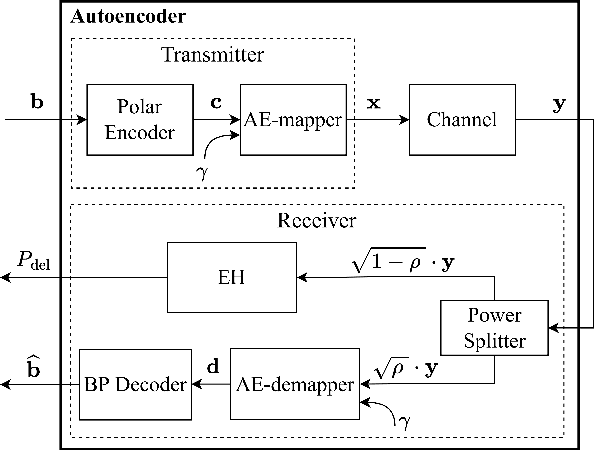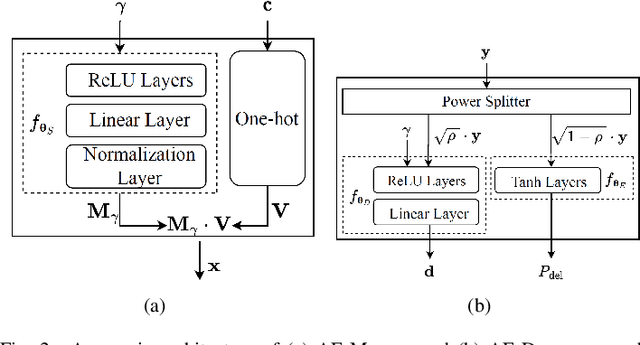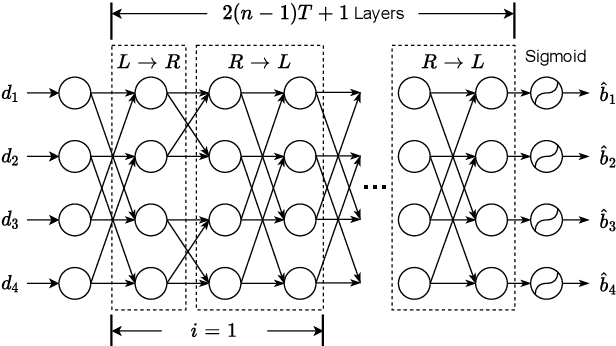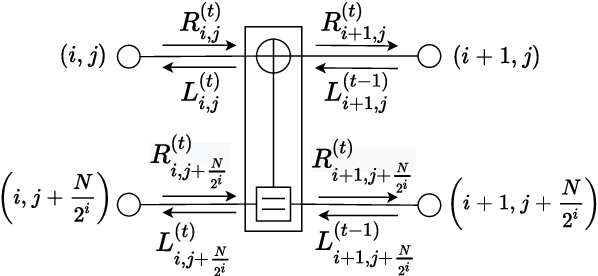Jingwen Cui
End-to-End Design of Polar Coded Integrated Data and Energy Networking
Jun 07, 2024Abstract:In order to transmit data and transfer energy to the low-power Internet of Things (IoT) devices, integrated data and energy networking (IDEN) system may be harnessed. In this context, we propose a bitwise end-to-end design for polar coded IDEN systems, where the conventional encoding/decoding, modulation/demodulation, and energy harvesting (EH) modules are replaced by the neural networks (NNs). In this way, the entire system can be treated as an AutoEncoder (AE) and trained in an end-to-end manner. Hence achieving global optimization. Additionally, we improve the common NN-based belief propagation (BP) decoder by adding an extra hypernetwork, which generates the corresponding NN weights for the main network under different number of iterations, thus the adaptability of the receiver architecture can be further enhanced. Our numerical results demonstrate that our BP-based end-to-end design is superior to conventional BP-based counterparts in terms of both the BER and power transfer, but it is inferior to the successive cancellation list (SCL)-based conventional IDEN system, which may be due to the inherent performance gap between the BP and SCL decoders.
Polar Coded Integrated Data and Energy Networking: A Deep Neural Network Assisted End-to-End Design
Mar 28, 2023



Abstract:Wireless sensors are everywhere. To address their energy supply, we proposed an end-to-end design for polar-coded integrated data and energy networking (IDEN), where the conventional signal processing modules, such as modulation/demodulation and channel decoding, are replaced by deep neural networks (DNNs). Moreover, the input-output relationship of an energy harvester (EH) is also modelled by a DNN. By jointly optimizing both the transmitter and the receiver as an autoencoder (AE), we minimize the bit-error-rate (BER) and maximize the harvested energy of the IDEN system, while satisfying the transmit power budget constraint determined by the normalization layer in the transmitter. Our simulation results demonstrate that the DNN aided end-to-end design conceived outperforms its conventional model-based counterpart both in terms of the harvested energy and the BER.
 Add to Chrome
Add to Chrome Add to Firefox
Add to Firefox Add to Edge
Add to Edge